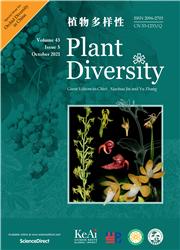A novel seed cone of Pinus from the Miocene of coastal Southeast China indicates kinship with Southeast Asian pines
Abstract
Pinus is an economically and ecologically important genus whose members are dominant components globally in low-latitude mountainous and mid-latitude temperate forests. Pinus species richness is currently concentrated in subtropical mid-low latitudes of the Northern Hemisphere, differing from the latitudinal diversity gradient mostly recognized in woody angiosperms. How the present pattern was developing in Earth's past is still poorly studied, particularly in eastern Asia. Here, a new fossil species, Pinus shengxianica sp. nov. is described based on a fossil seed cone from the Late Miocene Shengxian Formation in Zhejiang, southeast China. A co-occurring cone is recognized as a known fossil species, Pinus speciosa Li. Extensive comparison of extant and fossil members of Pinus suggests P. shengxianica shares a striking cone similarity to Pinus merkusii and Pinus latteri (subsection Pinus) from tropical Southeast Asia in having annular bulges around the umbo on the apophysis. The morphological resemblance indicates these two extant low-latitude pines probably possess a close affinity with the present newly-discovered P. shengxianica and originated from East Asian mid-low latitude ancestors during this generic re-diversification in the Miocene. This scenario is consistent with the evolutionary trajectory reflected by the pine fossil history and molecular data, marking the Miocene as a key period for the origin and evolution of most extant pines globally. The co-occurrences of diverse conifers and broadleaved angiosperms preferring diverse niches demonstrate Late Miocene eastern Zhejiang was one of the hot spots for coniferophyte diversity and hosted a needled-broadleaved mixed forest with complex vegetation structure and an altitudinal zonation.

 求助内容:
求助内容: 应助结果提醒方式:
应助结果提醒方式:


